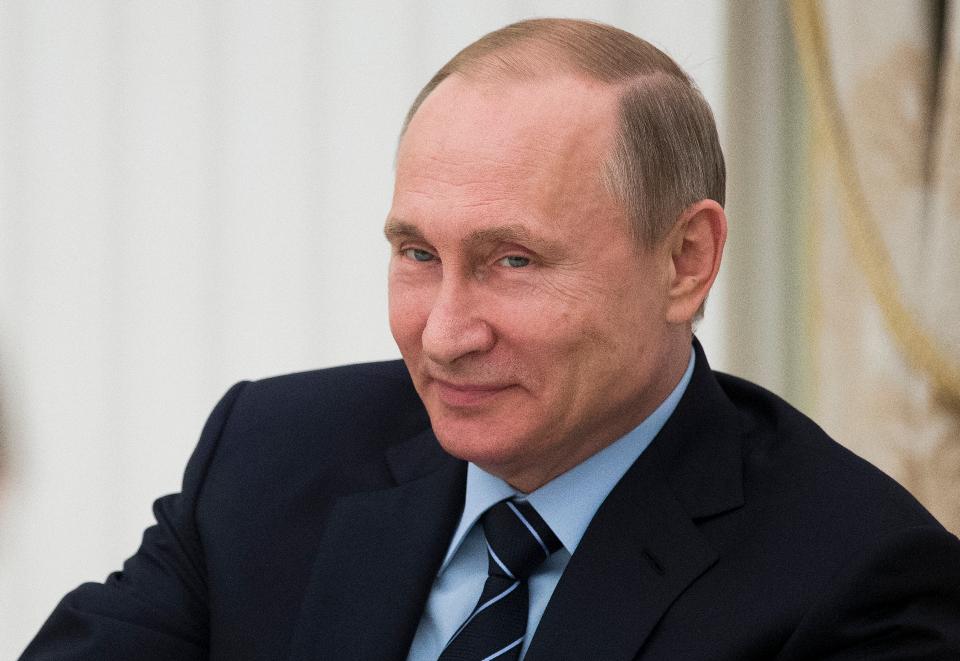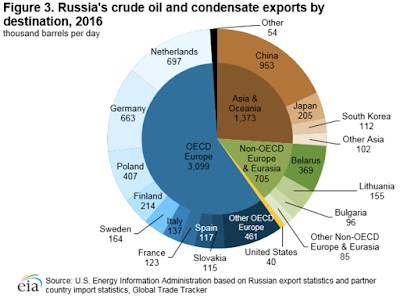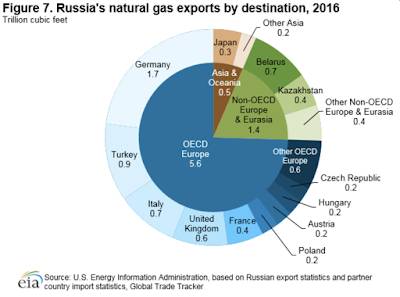
This article was last updated on April 16, 2022
Canada: ![]() Oye! Times readers Get FREE $30 to spend on Amazon, Walmart…
Oye! Times readers Get FREE $30 to spend on Amazon, Walmart…
USA: ![]() Oye! Times readers Get FREE $30 to spend on Amazon, Walmart…
Oye! Times readers Get FREE $30 to spend on Amazon, Walmart…
A white paper released by the U.S. Department of Defense and the Joint Chiefs of Staff entitled "Russian Strategic Intentions – A Strategic Multilayer Assessment" reviews Russia's activities around the globe and will provide the U.S. government and military a better understanding of Russia's goals so that these "provocative" activities can be countered.
Let's open with this quote from the paper:
"The National Security Strategy (NSS), National Defense Strategy (NDS), and National Military Strategy all note that future confrontations between major powers may most often occur below the level of armed conflict. In this environment, economic competition, influence campaigns, paramilitary actions, cyber intrusions, and political warfare will likely become more prevalent. Such confrontations increase the risk of misperception and miscalculation, between powers with significant military strength, which may then increase the risk of armed conflict. In this context, the US capability to influence the outcomes of both global and regional events must be reconsidered. The growing divergence among great powers (i.e., the US, China, and Russia) regarding what constitutes legitimate or acceptable deterrence, compellence, and escalation management activities should be carefully examined."
According to Joint Staff Deputy Director for Global Operations Rear Admiral Jeffrey J. Czerewko, there are three main strategies being adopted by Russia:
"1.) Russia is adopting coercive strategies that involve the orchestrated employment of military and nonmilitary means to deter and compel the US, its allies and partners prior to and after the outbreak of hostilities. These strategies must be proactively confronted, or the threat of significant armed conflict may increase.
2.) Russia exhibits a deep-seated sense of geopolitical insecurity which motivates it to pursue strategic objectives that establish an uncontested sphere of influence in the post-Soviet region. Yet, Russians increasingly disagree with the Kremlin’s assertions that the US is a looming external danger and a subversive force in Russian domestic politics.
3.) Russia’s gray zone tactics are most effective when the target is deeply polarized or lacks the capacity to resist and respond effectively to Russian aggression. According to Russian strategic thought, deterrence and compellence are two sides of the same coin." (my bold)
Please note that "gray zone tactics" refers to conflict that is short of an armed struggle, tactics that are somewhere between peace and war.
The paper notes that Russia is engaged in a "zero-sum" competition with the West and its looking to regain its "rightful status as a great power". According to the paper, there is a sense of frustration in Moscow that the West has not realized that the two are locked in a "gray zone state of conflict" and that:
"…Since Russian armed forces do not possess the resources required to compete on an equal footing with the US, Russia has developed its own approach to competition, seeking out and exploiting contested spaces and points of vulnerability, whether it stems from a vacuum of military power, of political will to use it, or a divergence of threat perception within a country or an alliance. Information has been weaponized, and disinformation has become an incisive instrument of state policy. Nowhere is Western confusion more clearly demonstrated than in Russian employment of digital technology, used to reinforce one of Russia’s key tools of statecraft, maskirovka, literally translated as ‘little masquerade’. The concept of maskirovka involves camouflage, denial, deceit, misdirection, and operational dexterity."
While this paper is extremely detailed and quite lengthy, for the purposes of this posting, I want to focus on one chapter in particular, "Putin's Grand Strategy and U.S. National Interests" written by Dr. Christopher March. The author begins his contribution by questioning whether Russia's President Vladimir Putin has a grand, overarching strategy for Russia and the world or whether he is just reacting to international events as they occur and what threat this strategy (if it exists) may post to the interests of the United States.
Dr. March opens by observing that Mr. Putin is a serious strategist, in contrast to what other analysts believe (i.e Anne Applebaum and Michael McFaul who believed that Putin's primary goal was to stay in power) and that he does have a strategy that will reposition Russia as one of several centres of power as U.S. dominance on the world stage fades and the global geopolitical system evolves into a multipolar (Chinese dominated) world. In this new global order, both Eastern and Western Europe are forced to "play nice" with Russia since they are heavily dependent for Russian oil and natural gas as shown on these graphics from the Energy Information Administration:
In addition to "playing nice" with Europe as a whole, Russia is also embracing China in a "soft alliance", an arrangement that allows Russia to maintain its sovereignty along its eastern flank as China moves toward becoming the world's largest economy and, perhaps, its best outfitted military machine. Along with Beijing, Moscow seeks a new multipolar world and a final end to Washington's agenda of complete global control. Here is a quote from the paper looking at the advantages of a Russia – China alliance to Russia and the disadvantages of this alliance to the United States:
"Not only does the alliance provide each country with a secure rear flank, technology transfers and weapons sales support each other’s military-industrial complexes and military modernization. While Russia is still ahead of China in certain areas, including maritime, aviation, and weapons systems, the Kremlin knows that this edge will likely give way in the next 10-20 years, as China emerges as the more advanced and powerful of the pair. Hence the focus of acting Secretary of Defense Patrick Shanahan on “China, China, China”—for all indications are that, in the long term, China will dwarf Russian military power and present the greatest threat to US interests and national security."
This leaves the United States in a precarious position since Russia is likely to counter Washington wherever it can do so without punitive damages (i.e. sanctions). We can clearly see this in the Middle East where Russia took top place in Bashar al Assad's efforts to remain in power in Syria. The author states the following:
"Moscow will seek to counter U.S. action simply because it resents American global hegemony, and it can do so because the U.S. political system's dysfunctionality (by the design of the Founding Fathers) tempers its response while its alliance system too leads to the imposition of costs that do not outweigh the benefit of Moscow's perceived gains."
The author notes that Russia's strategy has two main pillars:
1.) Moscow's strategic alliance with Beijing in pursuit of a dipolar world in which U.S. hegemony is defeated.
2.) the retention of Russia's "tentacles" on its former Soviet neighbours. This move will allow Russia to shatter the control of the North Atlantic Treaty Organization over some of its former vassal states (i.e. Poland).
Let's look at a summary of the author's conclusions about Mr. Putin:
1.) Russian President Vladimir Putin has a grand strategy that he is following.
2.) The threads of this strategy can be seen at the theater/operational level and join together at the grand strategic level.
3.) Russia seeks a veto power over its near abroad and considers the area part of its exclusive sphere of influence.
4.) Russia has entered into a strong alliance with China, one that is mutually beneficial.
5.) Russian recidivism is a threat to US national interests, particularly to NATO and its new members.
In conclusion, I would like to add one additional thought to the author's concerns about the threat that Vladimir Putin's grand strategy plays to America's geopolitical strategy. With Washington as divided as it ever has been and with both parties focussing on issues that are of little consequence as well as nonsensical infighting, Russia and China have been given a once in a lifetime opportunity to defeat the United States at its own game and manipulate the global geopolitical picture to their own advantage. As I noted above:
"Russia’s gray zone tactics are most effective when the target is deeply polarized or lacks the capacity to resist and respond effectively to Russian aggression."
Click HERE to read more from this author.
You can publish this article on your website as long as you provide a link back to this page.



Be the first to comment